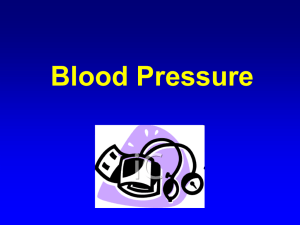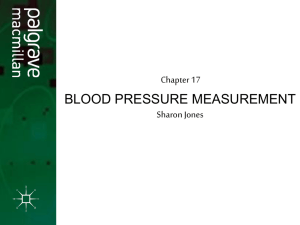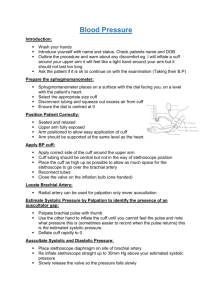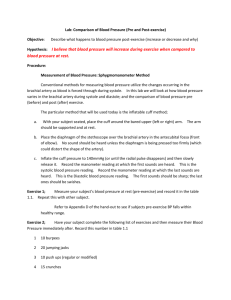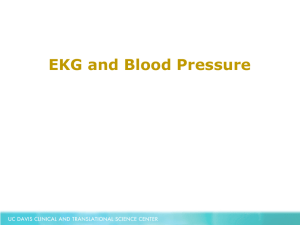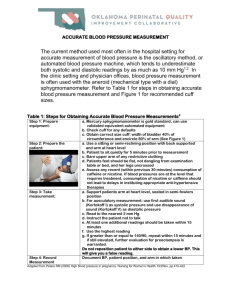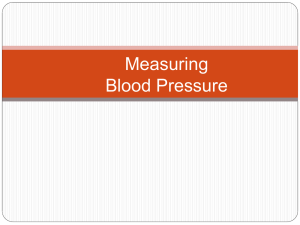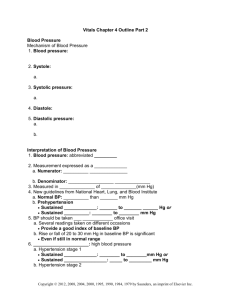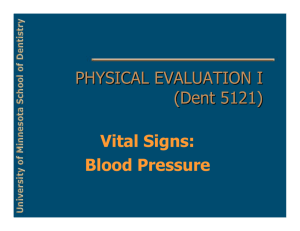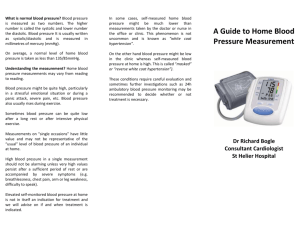ACSM Blood Pressure Guidelines: Assessment & Classification
advertisement
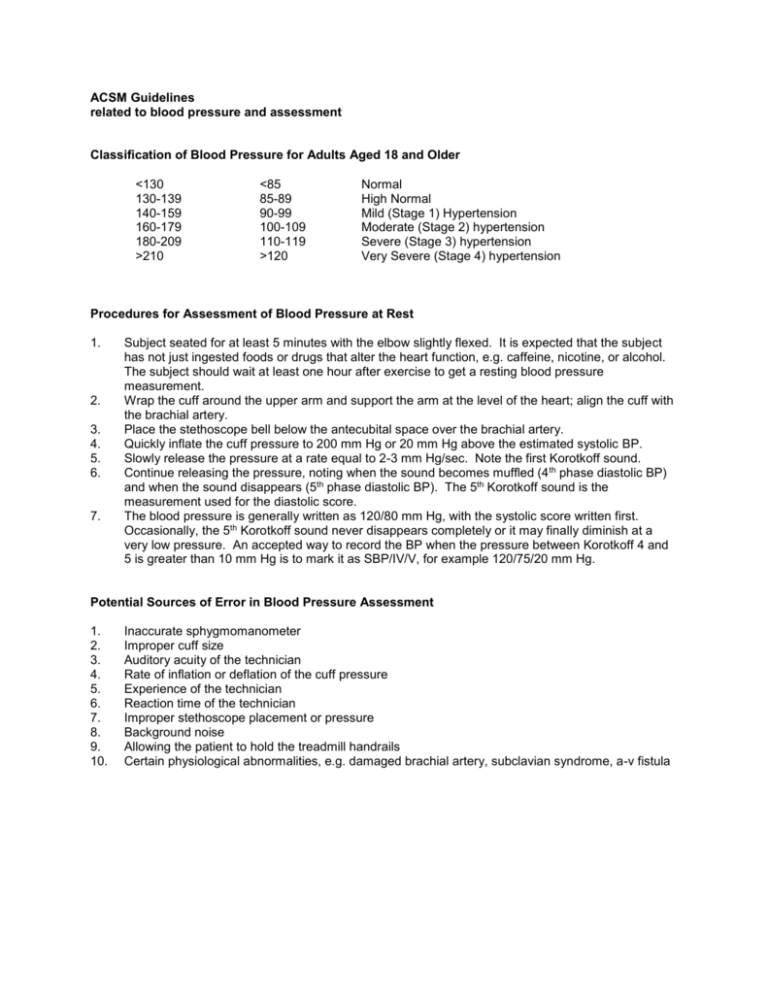
ACSM Guidelines related to blood pressure and assessment Classification of Blood Pressure for Adults Aged 18 and Older <130 130-139 140-159 160-179 180-209 >210 <85 85-89 90-99 100-109 110-119 >120 Normal High Normal Mild (Stage 1) Hypertension Moderate (Stage 2) hypertension Severe (Stage 3) hypertension Very Severe (Stage 4) hypertension Procedures for Assessment of Blood Pressure at Rest 1. 2. 3. 4. 5. 6. 7. Subject seated for at least 5 minutes with the elbow slightly flexed. It is expected that the subject has not just ingested foods or drugs that alter the heart function, e.g. caffeine, nicotine, or alcohol. The subject should wait at least one hour after exercise to get a resting blood pressure measurement. Wrap the cuff around the upper arm and support the arm at the level of the heart; align the cuff with the brachial artery. Place the stethoscope bell below the antecubital space over the brachial artery. Quickly inflate the cuff pressure to 200 mm Hg or 20 mm Hg above the estimated systolic BP. Slowly release the pressure at a rate equal to 2-3 mm Hg/sec. Note the first Korotkoff sound. Continue releasing the pressure, noting when the sound becomes muffled (4 th phase diastolic BP) and when the sound disappears (5th phase diastolic BP). The 5th Korotkoff sound is the measurement used for the diastolic score. The blood pressure is generally written as 120/80 mm Hg, with the systolic score written first. Occasionally, the 5th Korotkoff sound never disappears completely or it may finally diminish at a very low pressure. An accepted way to record the BP when the pressure between Korotkoff 4 and 5 is greater than 10 mm Hg is to mark it as SBP/IV/V, for example 120/75/20 mm Hg. Potential Sources of Error in Blood Pressure Assessment 1. 2. 3. 4. 5. 6. 7. 8. 9. 10. Inaccurate sphygmomanometer Improper cuff size Auditory acuity of the technician Rate of inflation or deflation of the cuff pressure Experience of the technician Reaction time of the technician Improper stethoscope placement or pressure Background noise Allowing the patient to hold the treadmill handrails Certain physiological abnormalities, e.g. damaged brachial artery, subclavian syndrome, a-v fistula Description of the blood pressure phases and Korotkoff sounds from: Braunwald, E. The physical examination. In Heart Disease. Philadelphia: W.B. Saunders Co., 1992. phase I phase II phase III phase IV phase V first appearance of clear tapping sound; marks the SBP murmuring or swishing sounds crisper sounds increasing in intensity sounds suddenly become muffled sounds disappear; marks DBP Procedures for Assessment of Blood Pressure at Exercise Additional considerations for exercise testing: 1. During a graded exercise test, the procedure is to measure the blood pressure at least once during each stage. Typically this is done during the last minute of the stage as this allows a greater time for the steady state to be reached, but just as importantly, the technician must get a reading and this allows time in case a second attempt is necessary. 2. The pre-exercise BP greater than 200 mm Hg systolic or 120 mm Hg diastolic is a contraindication to exercise. Do not begin the test! Do’s and Don’ts 1. Do practice and concentrate carefully. Block out all external stimuli as you try to zero in on the correct measurement. 2. Do assure that your equipment is in good working order. 3. Do anticipate that the subject may have eaten, smoked, or exercised before the test. 4. Do use a quiet room and attempt to be a calming influence on the subject. 5. Do make sure to support the arm in an extended position and hold it at the level of the subject’s heart. 6. Don’t be in a hurry and guess at the readings. 7. Be consistent in your technique. Find the strongest brachial pulse. Make sure the tube is not bouncing around causing noise. Do tape the cuff in place for graded exercise tests if it seems to slip. 8. Don’t leave the cuff partially inflated. It obstructs the blood flow for the subject and can be an annoyance. 9. Do not let the subject grasp the handrails for support. 10. Do not neglect the recovery phase! Monitor your subject carefully. Questions 1. What are some typical causes of error in assessing blood pressure? 2. How did the blood pressure response change as the intensity of exercise increased? 3. Describe the differences in blood pressure response from the exercise done on the cycle versus that of the treadmill.
